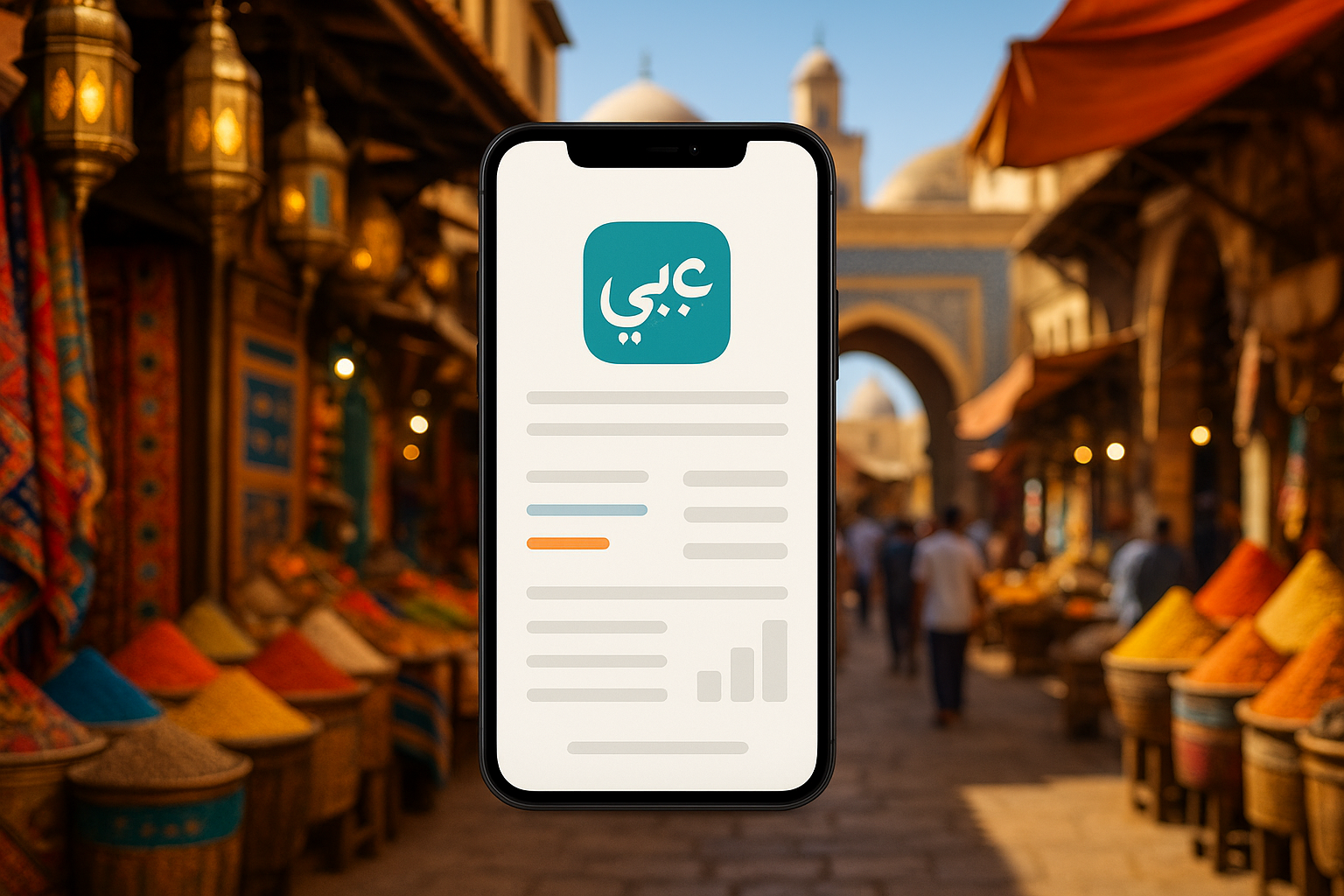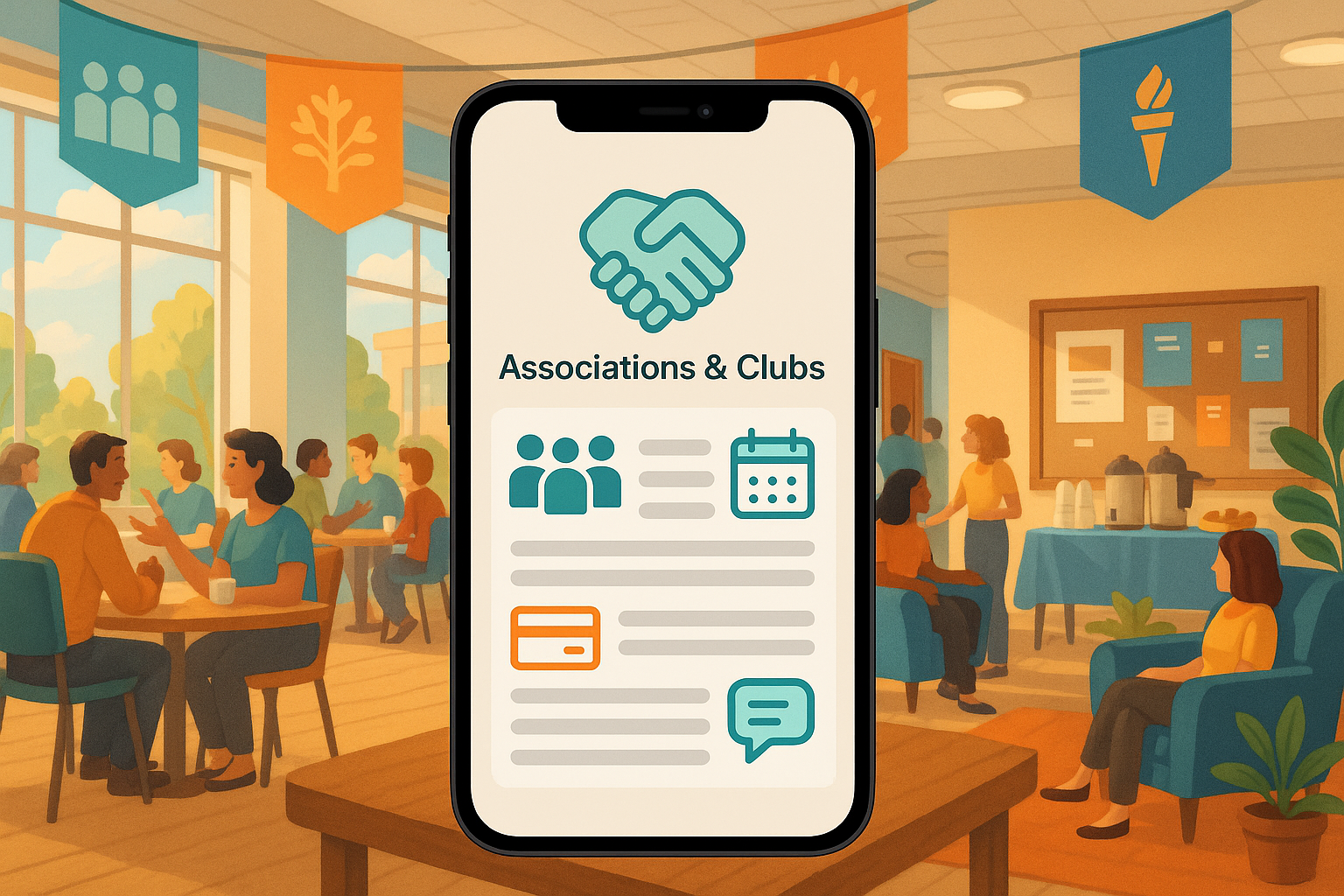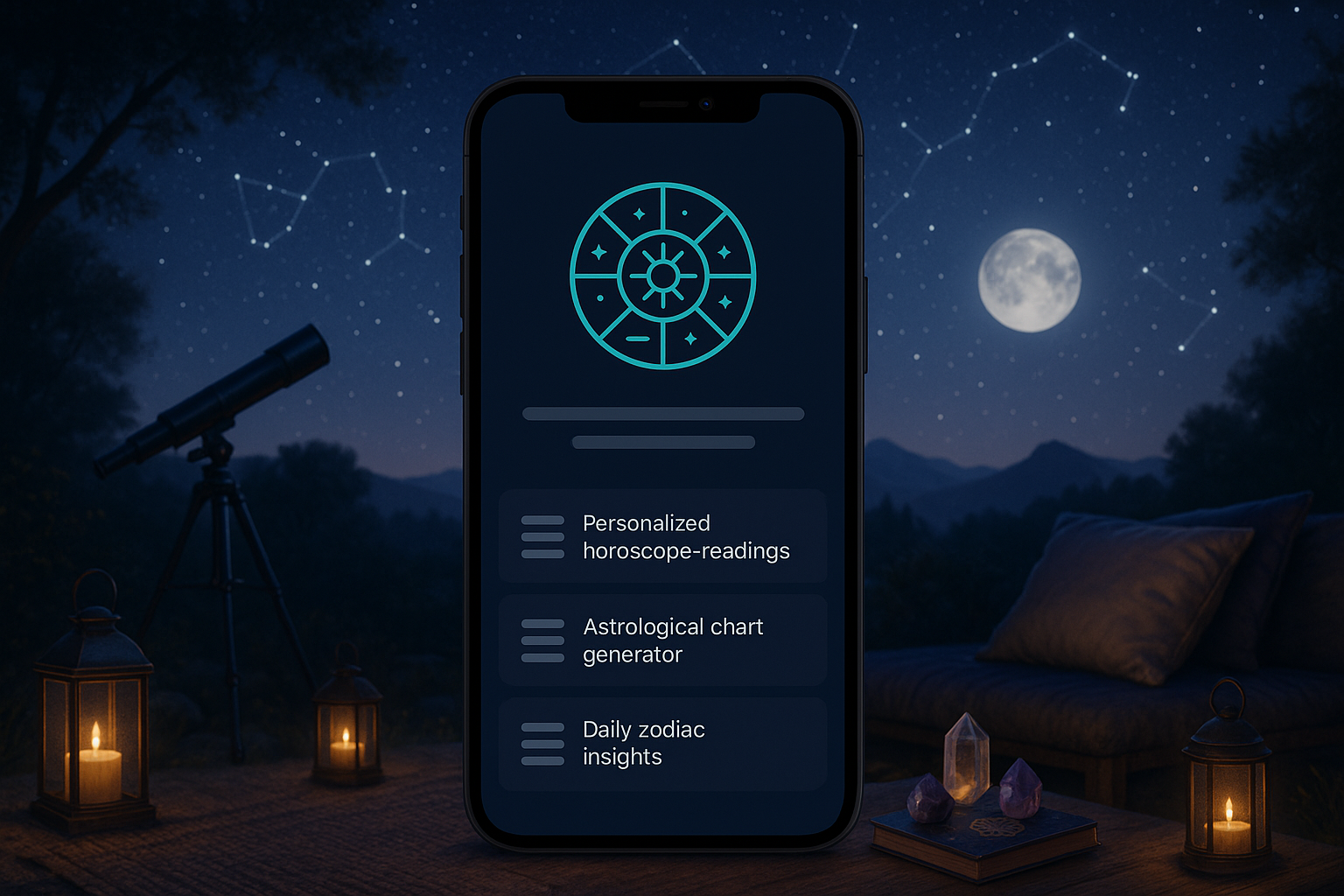Introduction
The mobile app market in the Middle East and North Africa (MENA) is experiencing explosive growth, presenting a vast opportunity for businesses to connect with a dynamic and digitally savvy audience. However, tapping into this market is far more complex than simply translating an existing application into Arabic. Developing a successful Arabic app involves overcoming significant technical, linguistic, and cultural hurdles that can frustrate even experienced in-house development teams. From completely re-engineering the user interface for right-to-left reading to handling the intricacies of Arabic script, the process demands specialized expertise.
This article serves as a comprehensive guide to navigating the world of Arabic app development. We will explore what truly defines an Arabic app, dissect the unique challenges that make in-house development difficult, examine the types of apps thriving in the MENA region, and provide insight into development costs. Furthermore, we will introduce you to top development companies that specialize in this market.
As a leading US AI-powered app development firm with over 20 years of experience and more than 120 successful projects launched, we at MetaCTO understand these challenges intimately. We specialize in transforming complex ideas into market-ready mobile apps, guiding our partners from concept to launch and beyond. This guide draws on our deep expertise to help you approach Arabic app development strategically and effectively.
What is an Arabic App?
An Arabic app is not merely an application with its text translated into the Arabic language. It is a fully localized digital product that is culturally and technologically tailored to the expectations of Arabic-speaking users. A truly effective Arabic app is built on three foundational pillars: language, culture, and technology.
First, language choice is critical. Arabic is not a monolithic language; it exists as Modern Standard Arabic (MSA) and numerous local dialects.
- Modern Standard Arabic (MSA) is the formal, standardized version used in media, literature, and official communications across the Arabic-speaking world. For global, international, and regional brands aiming to widen their customer base, MSA is the preferred choice as it ensures broad comprehension.
- Local Dialects are the vernaculars spoken in specific countries or regions, such as Egyptian, Gulf, or Levantine Arabic. Brands that want to cultivate a closer, more personal connection with their customers in a specific country should consider using the local dialect.
Second, cultural adaptation is non-negotiable. A successful localization strategy must respect the nuances of Arabic culture. This means carefully reviewing all content, including text and visuals, to avoid potentially offensive material. References to alcohol, certain religious symbols, explicit sexuality, or nudity must be avoided. Translators and content creators must be skilled at adapting the core experience of the app in a way that resonates with and respects the cultural sensitivities of Arabic audiences. Images, designs, and even color palettes must be thoughtfully considered to ensure they align with local customs and preferences.
Finally, and perhaps most importantly, is the technological foundation. Arabic apps require a fundamental redesign of the user experience (UX) to accommodate right-to-left (RTL) reading. This goes far beyond text alignment. It is about re-orienting the user’s entire interaction with the interface, creating an experience that feels natural and intuitive to someone accustomed to an RTL flow.
Reasons It Is Difficult to Develop an Arabic App In-House
Attempting Arabic app development without specialized experience can lead to a product that is frustrating to use, visually broken, and ultimately rejected by the target market. The challenges are deeply technical and require a unique skill set that most in-house teams do not possess. Hiring an expert development agency like MetaCTO, which offers comprehensive mobile app development services, can help you avoid these pitfalls.
The Right-to-Left (RTL) User Interface Challenge
The single biggest challenge in Arabic localization is the app layout. Arabic is read from right to left, a complete reversal of the left-to-right (LTR) convention used in English and many other languages. This requires a complete redesign of the user experience.
- Mirrored Layout: For RTL users, every element on the screen needs to be mirrored. Users instinctively look to the right side of the screen first for primary actions and navigation. This means menus, buttons, navigation bars, and progress indicators must be flipped. For example, a “back” arrow that points left
(<)in an LTR interface must point right(>)in an RTL interface. - Impact on User Experience: If an app’s layout is not properly designed from right to left, it directly and negatively impacts the user experience. An LTR layout forces Arabic users to scan the screen in a way that is unnatural and inefficient, leading to confusion and frustration.
Complex Script and Text Rendering
Displaying Arabic script correctly is another significant hurdle. The language has two features that can cause major rendering issues in applications that are not built to handle them.
- Shape-Shifting Characters: Unlike Latin characters, the appearance of an Arabic character changes depending on its position within a word—whether it is at the beginning, middle, end, or standing alone. An application or library that doesn’t understand these contextual forms will display a distorted and illegible version of the text. This results in an issue known as isolated characters, where every character appears in its “standalone” form, disconnected from its neighbors.
- Incorrect Direction: When a system fails to recognize the RTL nature of the script, it will display the text from left to right, rendering it completely unreadable.
Solving this is a two-step technical process. First, the Unicode Bidirectional Algorithm (BiDi) must be used to correct the text direction. Libraries like Python’s python-bidi can implement this, ensuring the text flows from right to left. However, this only solves half the problem. The characters will still appear in their isolated forms. The second step involves reshaping the characters based on their position, a process that specialized libraries can also assist with to ensure the final text is visually accurate and legible.
Handling Bidirectional (BiDi) Text
To add another layer of complexity, Arabic is technically a bidirectional language. While the primary script is RTL, certain elements within the text remain LTR. Improper handling of these BiDi texts can lead to a messy and confusing interface.
- Numbers and Foreign Words: Numbers are a prime example. The number “1000” is written as “1000” in Arabic, not flipped to “0001”. Similarly, titles of foreign origin and brand names (e.g., “MetaCTO,” “Amazon”) retain their original LTR format.
- Telephone Numbers: Phone numbers typically follow the international LTR format, starting with a plus sign (+), followed by the country code, area code, and the number itself.
- Punctuation: Punctuation marks like question marks and exclamation points are particularly tricky. Their placement depends on the directionality of the surrounding characters. Inconsistent handling can make sentences ambiguous. The solution lies in using invisible formatting characters called control characters, specifically the Left-to-Right Mark (LRM) and Right-to-Left Mark (RLM). These characters can be inserted to force the correct display of punctuation regardless of the surrounding text, a nuance that requires deep technical knowledge.
Layout Constraints and Visual Elements
The challenges extend beyond text to the very structure and visuals of the app.
- Character Count: Arabic text typically takes up to 25% more screen space than its English equivalent. This means that layouts designed with strict character limits for English will almost certainly break. Arabic layouts must be designed to be smaller or more flexible to absorb the longer text without appearing cluttered or truncated.
- Visuals and Graphics: Visual elements that work in an LTR document may not translate smoothly. Images, charts, and graphics often need adjustments to align with the RTL layout. A visual sequence depicting steps in a process, for instance, may need to be flipped to flow correctly from right to left. An unflipped sequence can confuse Arabic users accustomed to RTL reading habits. Similarly, a chart with its Y-axis on the left can lead to misinterpretation.
These combined challenges underscore the need for a programmer or localizer who is a native Arabic speaker to ensure the app is truly ready for the market. Without this expertise, in-house teams risk launching a product that is functionally broken and culturally disconnected.
Different Types of Arabic Apps
The MENA region is a hotbed of mobile app innovation, with local entrepreneurs and international enterprises launching applications that cater to unique regional needs. Examining the most successful apps reveals key patterns for what works in this market.
Super Apps: The All-in-One Ecosystem
Many users in the region prefer “super apps” that consolidate multiple services into a single platform.
- Careem: What started as a transportation service evolved into a powerhouse app integrating food delivery and digital payments under its Careem Pay ecosystem. Its success was driven by tailoring services to the Middle Eastern market, offering cash payments, multiple vehicle options, and region-specific customer support. Its acquisition by Uber highlighted the massive potential for tech investment in the region.
Food, Grocery, and Pharmacy Delivery
On-demand delivery is one of the most dominant app categories.
- Talabat: As one of the first online food delivery services in the region, Talabat built an incredibly efficient system for quick deliveries. It has since expanded into grocery and pharmacy delivery, paving the way for the rapid growth of the entire industry and attracting major competitors like HungerStation and Jahez.
E-commerce Platforms
A strong local e-commerce presence has emerged to compete with global giants.
- Noon: Competing directly with Amazon and Souq, Noon invested heavily in local warehouses and logistics to ensure fast deliveries and competitive pricing. Offering a vast range of products from electronics and fashion to groceries and home services, Noon has strengthened the regional e-commerce infrastructure and encouraged more local businesses to embrace online retail.
Fintech and Digital Payments
The shift toward a cashless economy is being accelerated by innovative fintech apps.
- STC Pay: A leading fintech app in the Middle East, STC Pay offers digital wallets, remittances, and bill payments. Supported by Saudi Arabia’s Vision 2030 initiative, it collaborated with local and international financial institutions to facilitate easy transactions, dramatically accelerating the adoption of digital payments in the kingdom.
Content and Music Streaming
There is a high demand for content that caters to local tastes.
- Anghami: As the first legal music streaming platform in MENA, Anghami’s success was built on its sharp focus on Arabic music and exclusive regional content. By offering both free and premium tiers and leveraging AI for music recommendations, Anghami proved the viability of regional streaming platforms and inspired a new wave of local content-focused startups.
Cost Estimate for Developing an Arabic App
Estimating the cost of Arabic app development requires looking beyond simple translation metrics. While the average price for English to Arabic translation is around $0.24 per word, this figure represents only a tiny fraction of the total investment.
The true costs are embedded in the complex development and localization work required to address the challenges outlined earlier. These include:
- Complete UI/UX Redesign: The time and expertise needed to re-architect an app for an RTL layout.
- Specialized Engineering: Implementing solutions for bidirectional text, character reshaping, and punctuation control.
- Flexible Layouts: Designing and building interfaces that can accommodate the 25% increase in text length for Arabic.
- Visual Asset Adaptation: The cost of adjusting or recreating images, charts, and graphics for an RTL context.
- Expert Consultation: The necessity of involving native Arabic-speaking developers, localizers, and cultural consultants.
Given these variables, the total cost can vary significantly based on the app’s complexity. At MetaCTO, we help our partners manage these costs effectively. For new ventures, we recommend starting with a Rapid MVP Development. By launching a streamlined version of your app in 90 days or less, you can test the market, gather real user feedback, and validate your idea on a tight budget before committing to a full-scale launch.
Top Arabic App Development Companies
Choosing the right development partner is paramount to your success in the MENA market. You need a team with the technical prowess and cultural understanding to navigate the complexities of Arabic app development.
1. MetaCTO
As a premier US-based AI Development and mobile app agency, we at MetaCTO bring over 20 years of experience to every project. We offer a full suite of services that cover every stage of the app lifecycle: strategy, design, Ai-enabled development, launch, growth, and monetization. Our proven process—Validate, Build, Grow, Monetize, Evolve—is designed to take your idea from concept to a successful, market-ready product.
We understand that building an Arabic app is a nuanced challenge. Our team of experts, combined with our extensive network of specialists, is equipped to handle the deep technical requirements of RTL design, bidirectional text, and cultural adaptation. We don’t just build apps; we build technology roadmaps that increase profit and valuation, ensuring your app is built the right way from day one.
Other Leading Agencies
While we are confident in our ability to deliver exceptional results, here are other notable agencies with a presence in the MENA region.
| Agency | Team Size | Minimum Budget | Location | Specialization |
|---|---|---|---|---|
| AGIMA | 50 - 249 | $25,000+ | MENA | Full-service digital development, from websites and mobile apps to UI/UX, e-commerce, and digital marketing. |
| Appcent | 50 - 249 | $50,000+ | MENA | Global technology solutions company helping clients innovate and optimize their digital transformation operations. |
| Interval | 10 - 49 | $5,000+ | MENA | Develops Android/iOS apps, e-commerce websites, and provides UI/UX, ERP, and CRM integration services. |
Conclusion
The Arabic-speaking world represents a tremendous and fast-growing market for mobile applications. However, success in this region demands far more than a simple translation. It requires a deep and respectful commitment to technical excellence, linguistic precision, and cultural adaptation. As we’ve explored, the path is laden with unique challenges, from the fundamental redesign for a right-to-left user experience to the subtle complexities of displaying bidirectional text and adapting visual content.
Successfully navigating this landscape means understanding that an Arabic app must feel native to its users in every respect. The thriving examples in super apps, e-commerce, and fintech all point to a common truth: localization is the key to connection and growth. This often means moving beyond in-house capabilities and partnering with an expert firm that possesses the specialized knowledge required.
Developing a successful Arabic app is a complex but highly rewarding endeavor. If you’re ready to overcome these challenges and capture the immense opportunity in the MENA market, we’re here to guide you. Talk with an expert at MetaCTO today to discuss your vision and let us help you build your app the right way, from day one.






